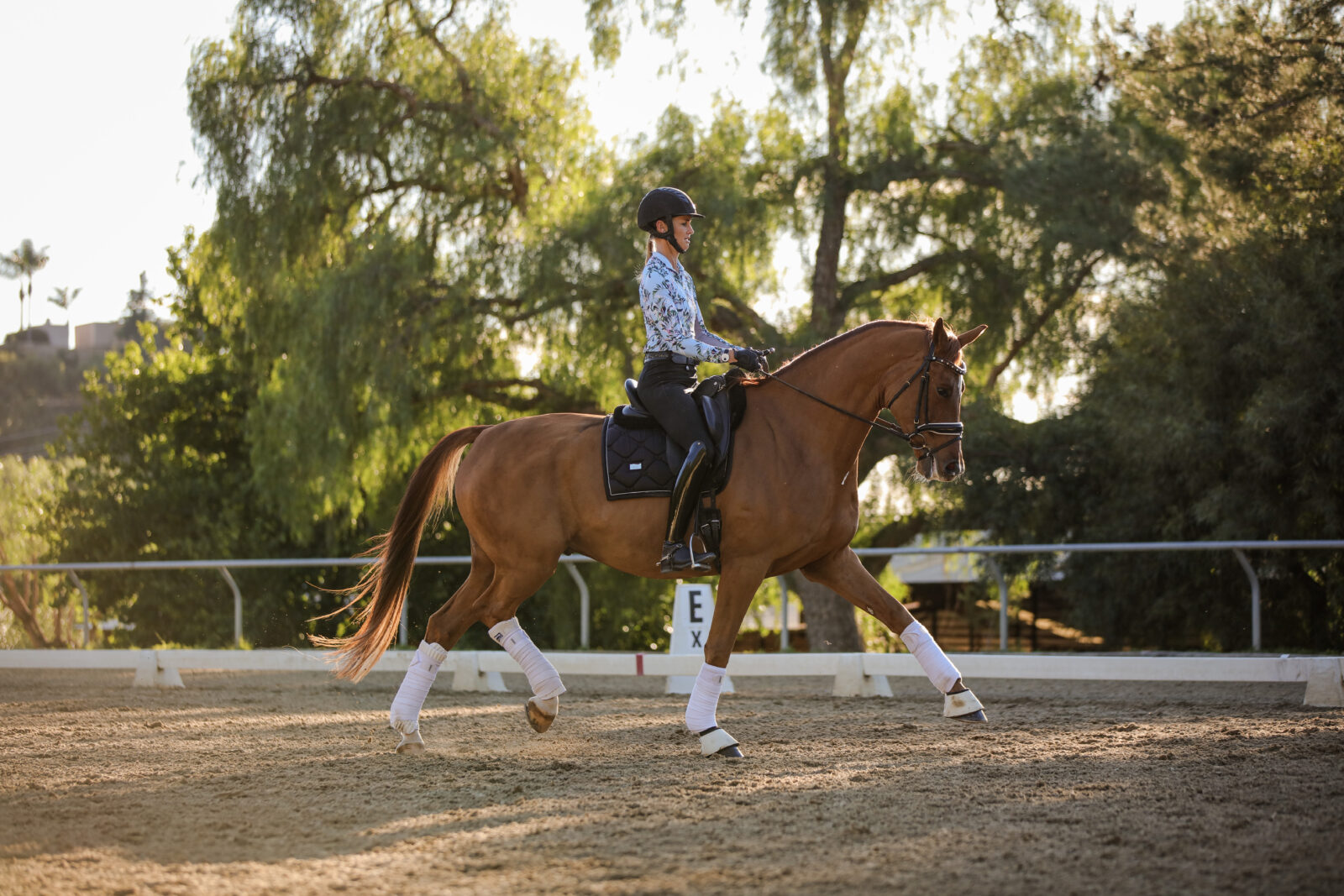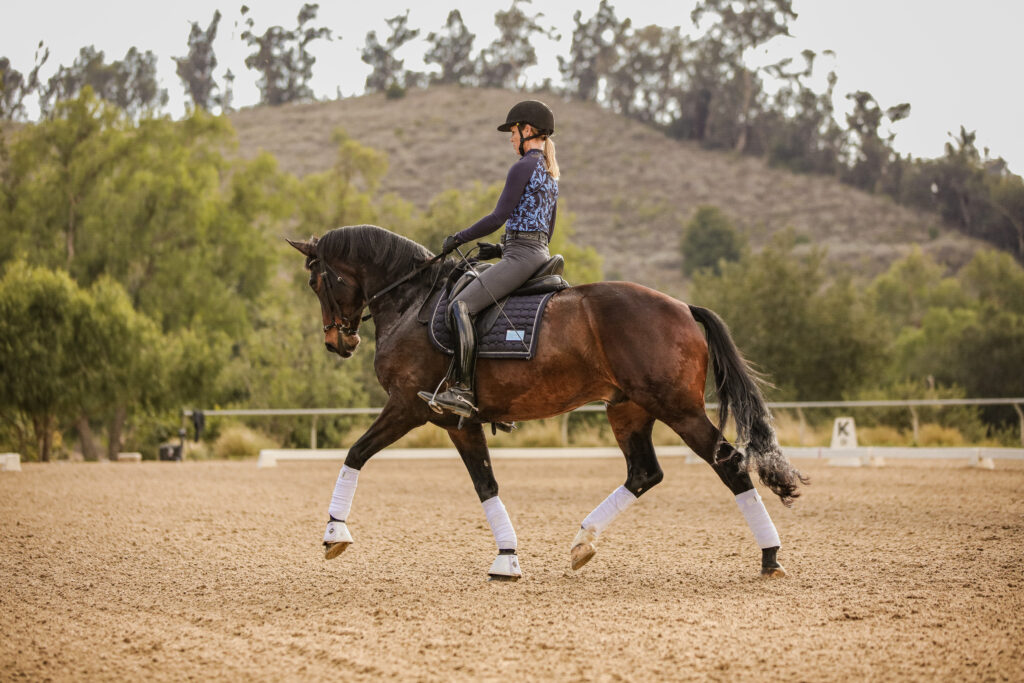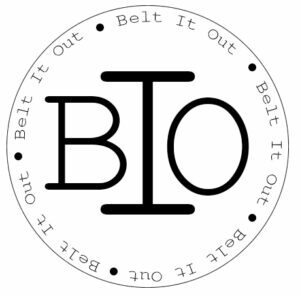What Is The Role Of The Hands In Sitting The Trot?

Ever had a riding theory question you couldn’t find the answer to? Or don’t have a go-to coach to ask? In this recurring segment, Amelia Newcomb is here to answer anything about your riding and dressage needs.
What should I be doing with my hands while riding the sitting trot? I’m afraid they flop with the movement of my body. Should they be more stationary?
“Super question! You’re right that you want to have quiet hands as you ride. If you feel that your hands are flopping all over, first focus on your seat. Often, when you work on improving your seat, your hands will fix themselves. When we are sitting the trot, we want to think about moving our hips with our horse’s motion, but at the same time, keeping tone in our transverse abdominals. Your transverse abs are key for keeping you stable in the saddle and allowing you to have an independent seat. This means that your seat works independently of your hands and vice versa.
After you’ve achieved an independent seat and your hands/arms can move independently of the rest of your body, you need to develop that soft elastic contact feel from your horse’s mouth to your shoulder. Because of the natural movement of the horse’s shoulders and neck in each gait, if our hands were still; the horse would be hitting the bit every stride. So instead of your hands being soft and floppy, your hands/arms need to be soft and following to move with the horse’s movement. So technically your hands will be moving, even if they look still!
In the walk and canter, this movement is easier to see and replicate because of the more obvious neck oscillation forward and back in the walk and canter. The elbows move forward and back to keep that steady contact.

In the trot, it’s a much more subtle up-and-down movement- but believe me that it can feel a lot bigger to your horse if you’re not following along! In posting trot, our seat goes up and down and our elbows hinge open and close to allow our hands to stay in the same space. When you sit the trot, your elbows will still need to be that hinge but it’s just a slight bend, straighten, bend, straighten since your body isn’t physically moving as high as in the posting trot.
As I mentioned before, an independent seat is a big part of having quiet hands. When you have an independent seat, this means that your hands, seat, and legs are all able to move independently of each other. So for example, when your seat is independent, your horse won’t be affected by your hands when your seat moves and vice versa. If your seat is not independent, then your following arms can’t work because they will physically be moved by your seat.”
If you need more help with your seat and achieving following elbows, check out my brand new Sitting Trot Challenge where go through step-by-step what your seat, leg, and hands need to be doing in order to sit the trot with ease. In just 30 days, you will be able to ride around the arena with so much more connection and harmony! You will go from cringing when you hear “Sit the trot” to saying “Sitting trot is fun!” Your horse will be amazed at how well you can communicate with them by the end of this challenge! Check out the challenge here.
Don’t feel like you’re ready for sitting trot yet? I get that! Check out this FREE PDF that will get you there: Get ‘5 exercises before you sit the trot’ today.
Amelia Newcomb is a USDF Gold medalist. Based in Somis, California, she incorporates complete dressage training from starting the young horse through the FEI levels in both her in person and online programs. Amelia works to develop a trusting and confident relationship between horse and rider. Her approach incorporates all aspects of horsemanship from basic groundwork to advanced dressage movements. Amelia’s mantra has always been “Dressage for All”, which is evident in both her in person and online coaching. With a successful YouTube video library of hundreds of free educational videos, over 220,000 subscribers (and counting!), and thousands of students enrolled in her online USDF accredited courses.


